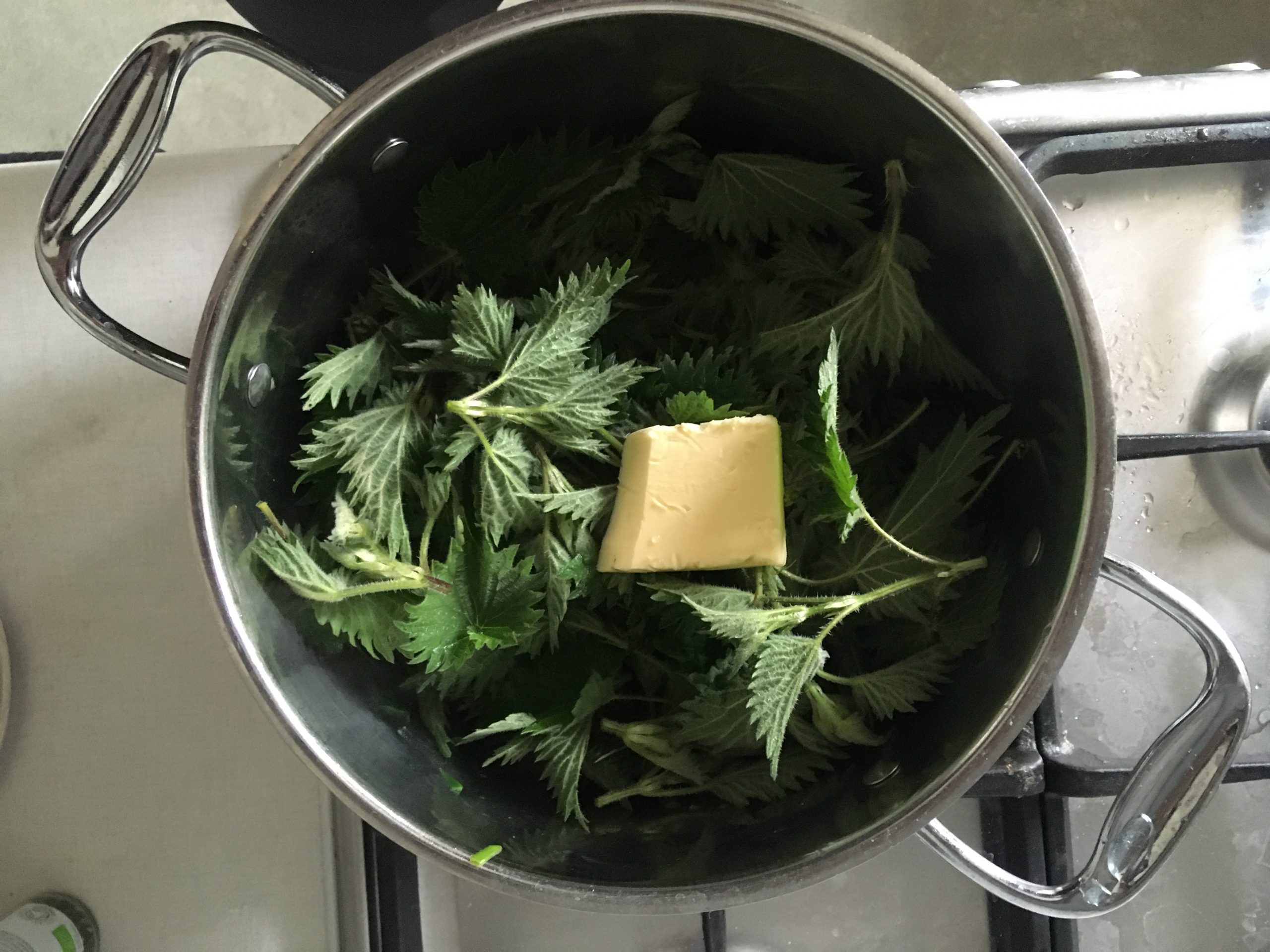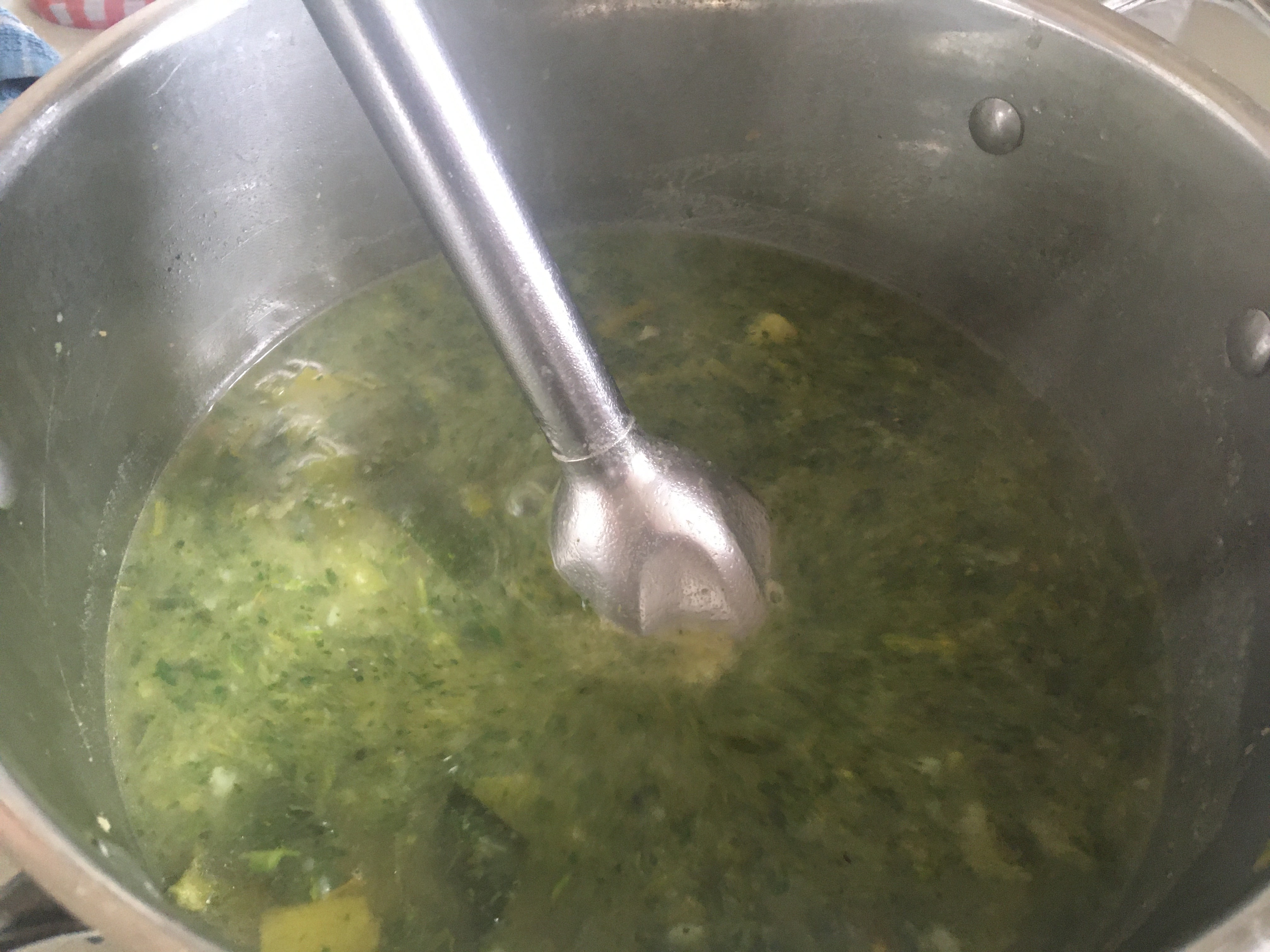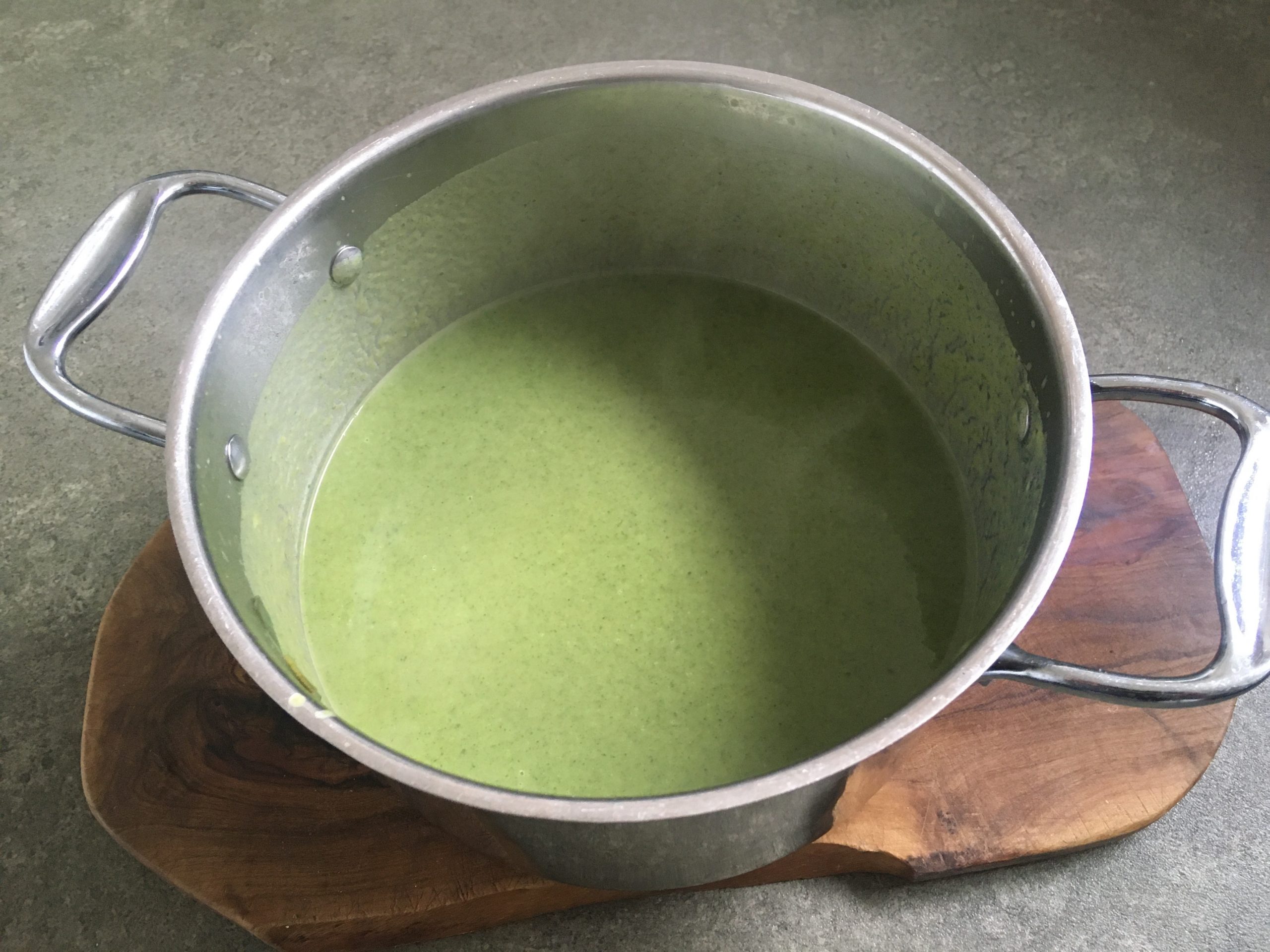If your fridge is looking short of green veg and you want to avoid a trip to the shops, a handy source could be available closer than you might think.
It’s stinging nettle season – and the perfect time to pick and eat these nutritious plants.
It might sound outlandish, but once cooked all that stinginess vanishes, and they taste surprisingly good – wholesome and spinachy but with a deeper, more satisfying flavour.
Moreover, nettles pack a big nutritional punch – being rich in vitamins (including A, C and K) as well as minerals such as calcium, iron, magnesium, phosphorus and potassium. And they are choc-full of antioxidants, too.
So why not give this recipe a go. It can be a brilliant thing to do with children – who may find the process hilarious (or horrifying). Your call.
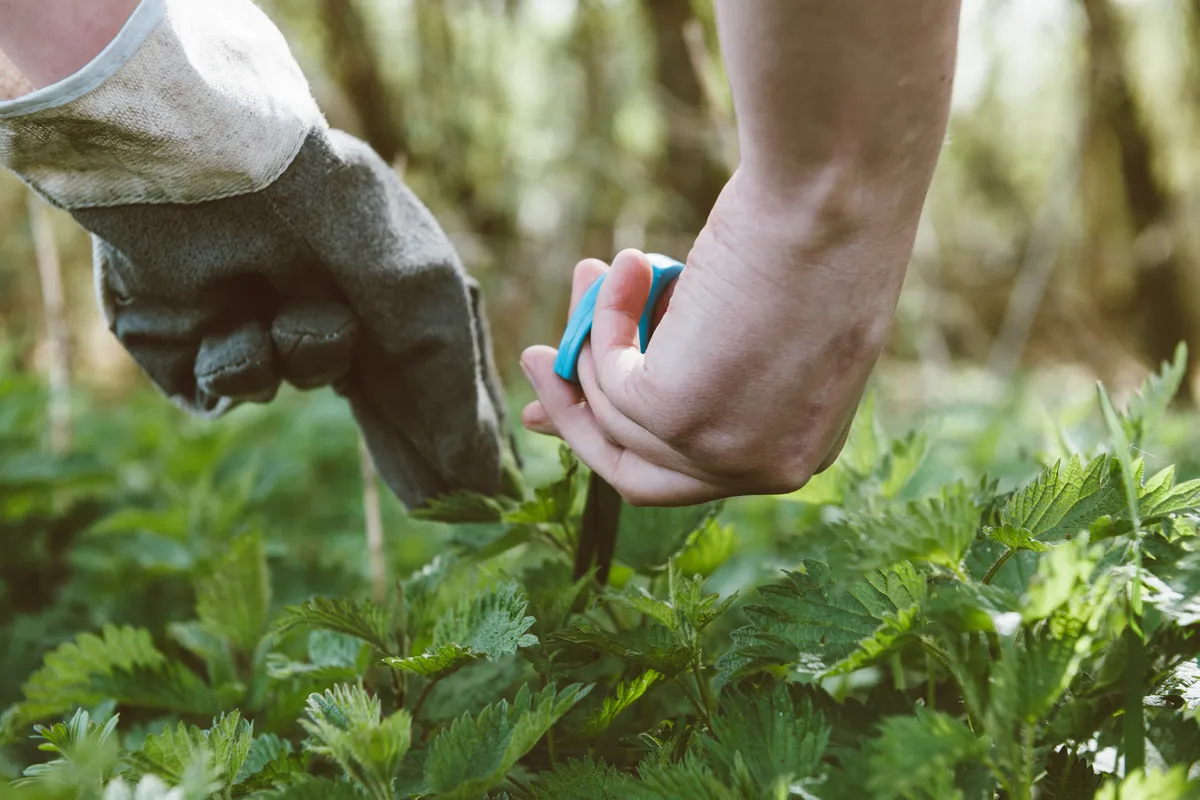
How to pick
Pull on at least one glove – a rubber kitchen glove or a garden glove would be best – and harvest from somewhere sensible (avoiding the base of lamppost, for obvious reasons). Use scissors, and bring a plastic bag for your cuttings.
It’s important to stick to young nettles. The new stems and leaves are perfectly tender. Older nettles tend to turn a little gnarly. If you doubt that, it’s with remembering that you can actually make twine from nettle stems, as Ray Mears demonstrates here.
In a few short weeks – probably by mid-May – the leaves will have become hairier, and once whizzed into soup, this can make the texture rather gloopy. So pick and cook while spring is still fresh – and before the nettles produce their flowers.
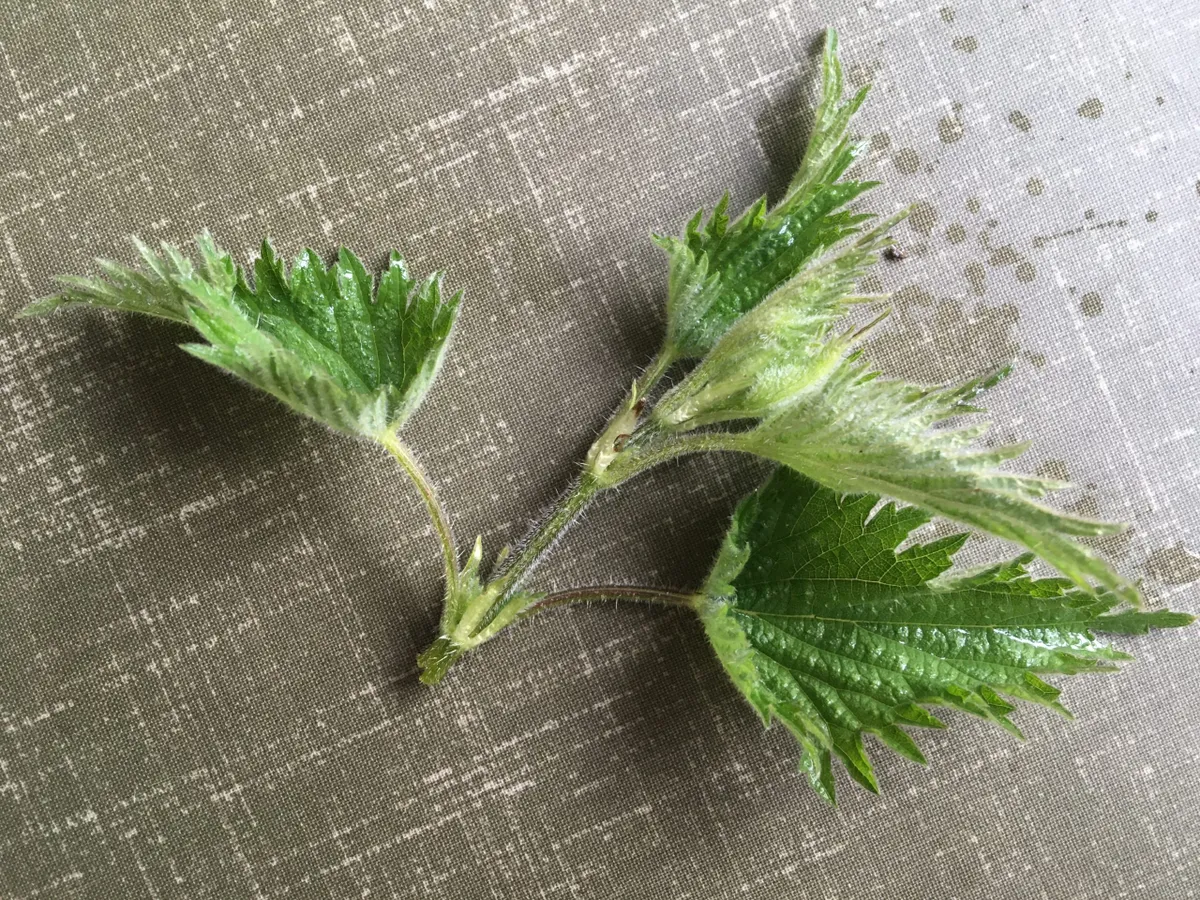
Even when picking young nettles, you should stick to the tender upper stems and youngest, freshest leaves.
Try to snap or cut off the upper leaves without pulling out the whole plant. If you do that, the remaining nettle should still flourish and will likely produce fresh flower-bearing stems.
While nettles are obviously ankle-nipping nuisance to humans, they are also a rich habitat for wildlife, including peacock butterflies, so if you like the idea of butterflies fluttering around to cheer us all up in lockdown, then do your best to leave the nettle in the ground.
(Whether this is a good idea in your garden is a moot point. I remember years ago the garden designer Chris Beardshaw promoting nettles as a garden plant during a discussion on Radio 4's Gardeners’ Question Time, much to the consternation of his fellow panel member, the late John Hoyland. Once nettles get a foothold in your garden, they can pop up all over the place, but I’ve always found them fairly easy to get rid of, provided you take care to loosen the soil and gently ease out their rather brittle roots.)
I digress.
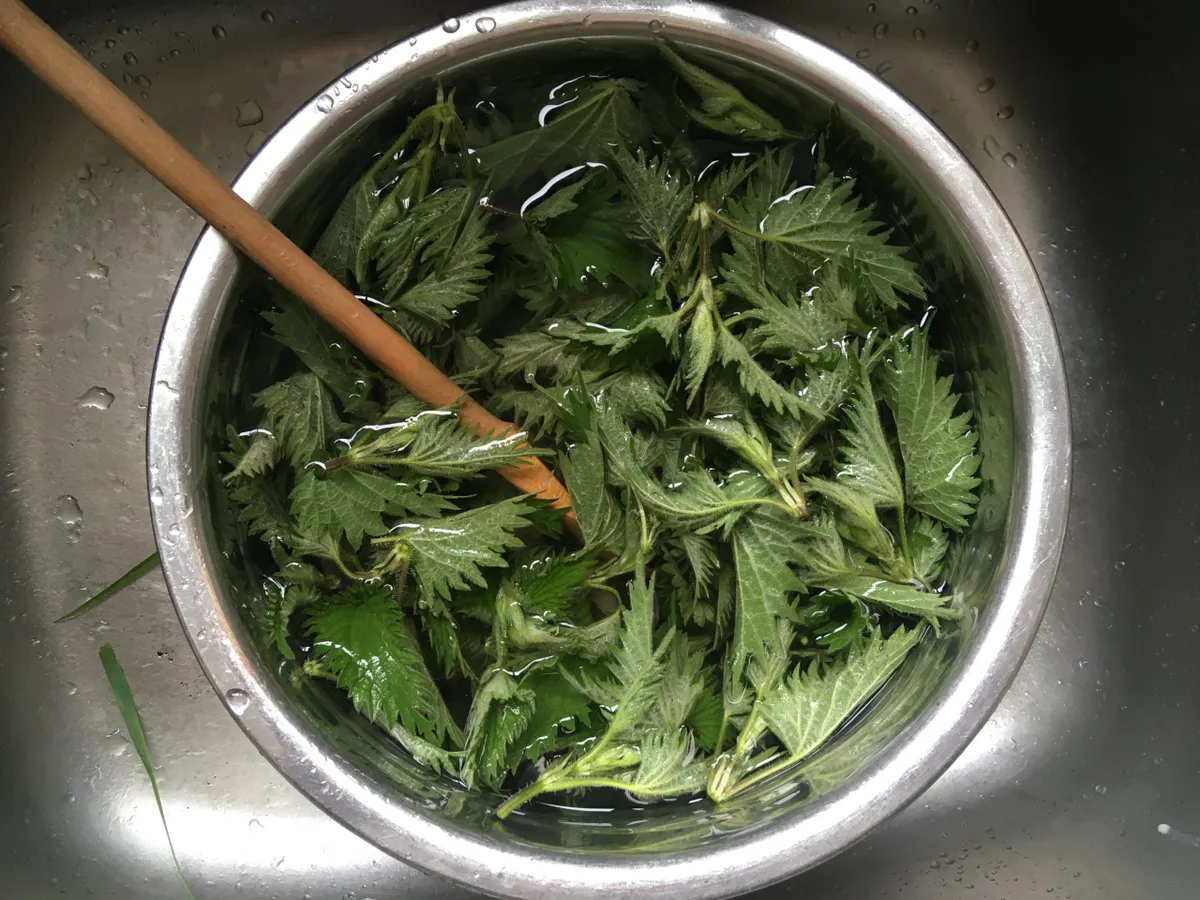
So you picked your nettles. Now you need to wash them thoroughly. It makes sense to wear long sleeves while doing to, or you’ll likely pick up a sting or two on your arms.
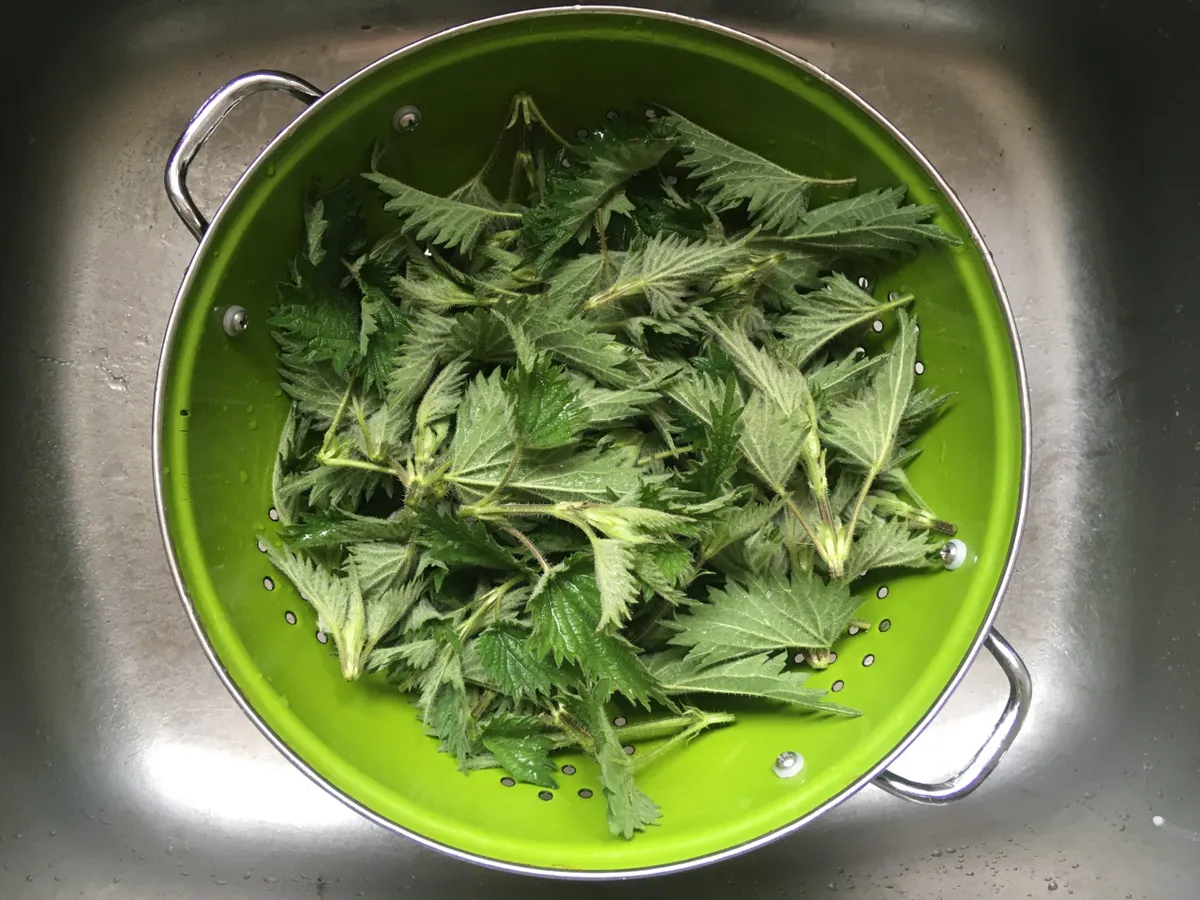
Alternatives
Once washed, you could cook, chop and add to an omelette, or tomato sauce on pasta, or to a risotto; BBC Food has more recipes to browse.
There’s also another nettle soup recipe elsewhere on this website, but this one is simpler, so even if your larder is looking bare, you have a better chance of scraping together the basics.
Note that if you live near a source of wild garlic, you could substitute a bunch of this for the leek… but be quick: as I write on 23 April, the season is reaching an end – rather early after all this dry and sunny weather – and the flavour of old ramson leaves can be a little strident.
